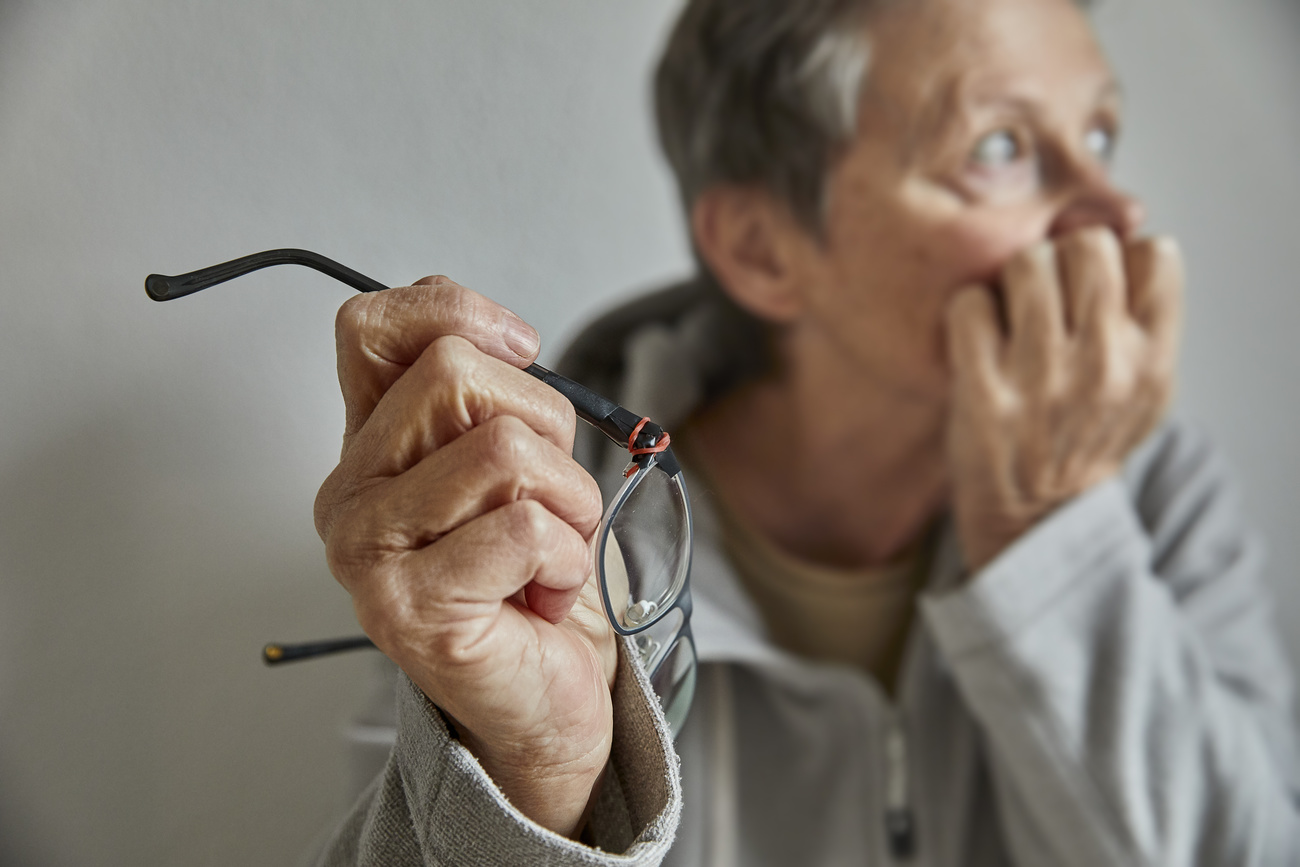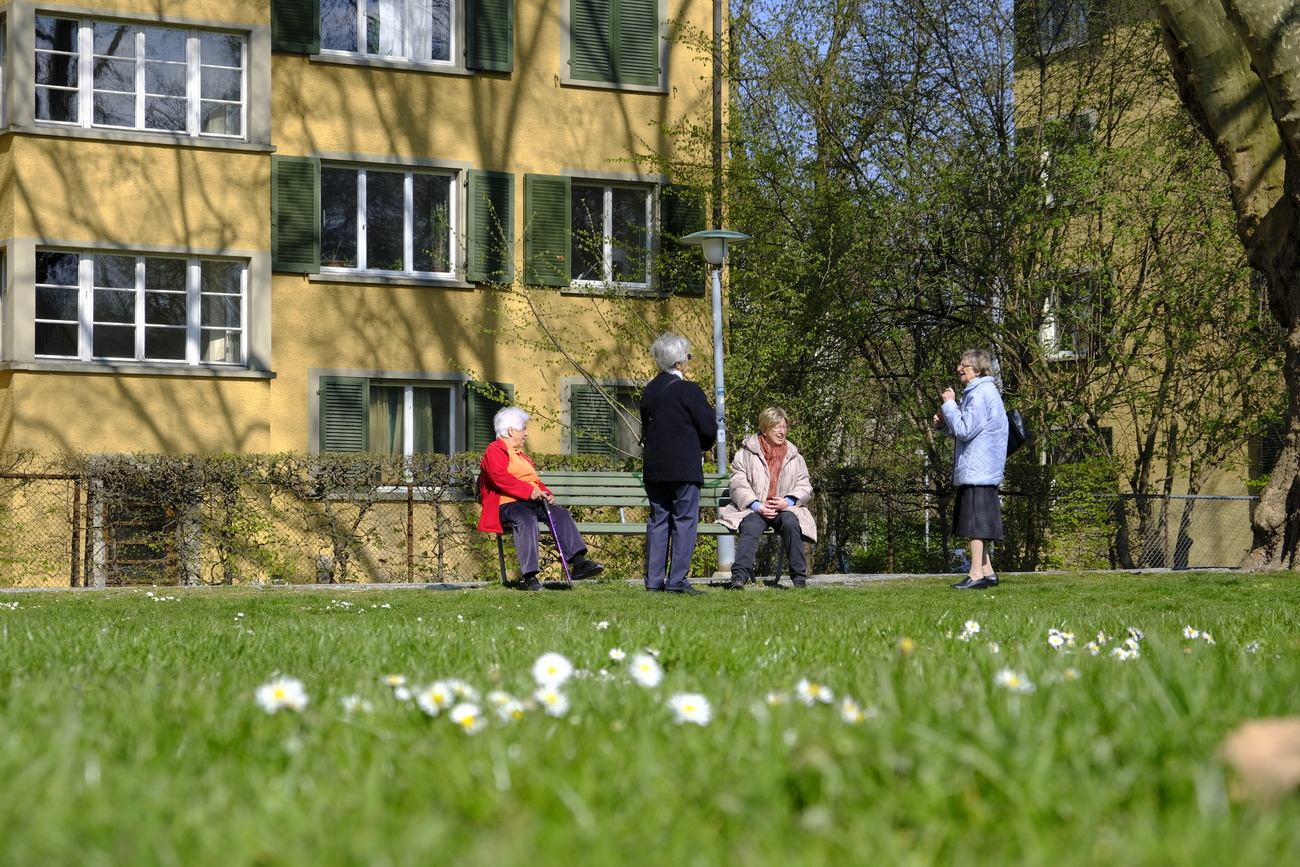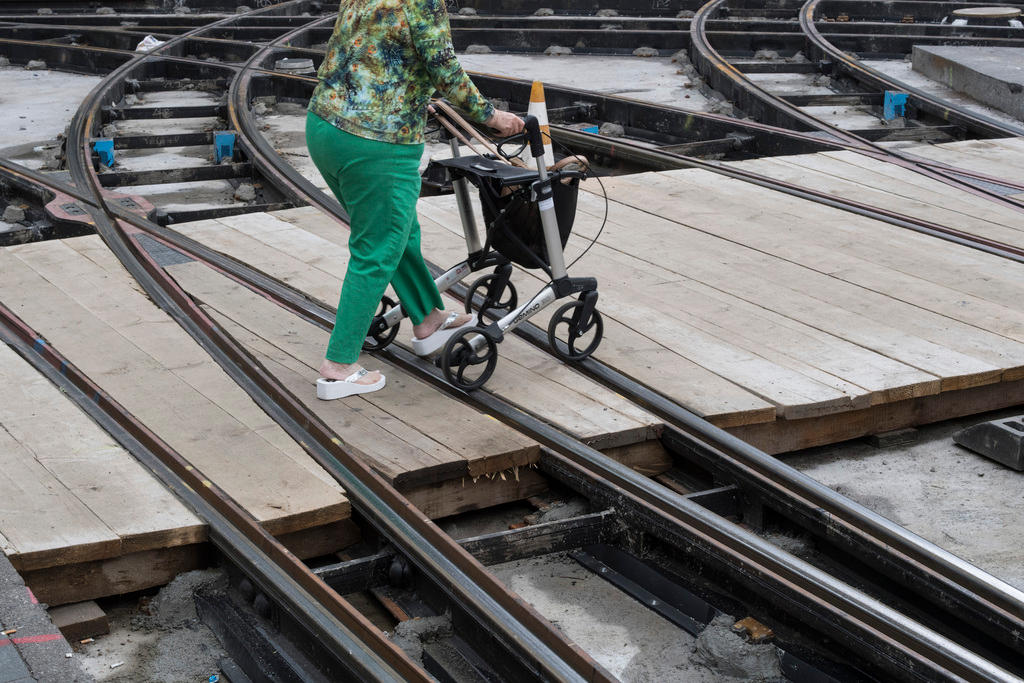
Swiss pension vote: what’s at stake

On March 3, Swiss voters will decide on whether retired people in Switzerland should receive a higher old-age and survivors’ pension. Here is an overview of the proposal.
How did this proposal come about?
A popular initiative launched by the trade unions is to be put to a vote. They gave their proposal the title “For a better life in old age”.
The initiative calls for the introduction of a 13th monthly pension payment – similar to the 13th monthly salary that is widely paid in Switzerland. This additional payment will increase purchasing power, the unions argue.
For many pensioners in Switzerland, payments from the old-age and survivors’ insurance (OASI) scheme are not enough to cover their basic needs. In such cases, pensioners receive so-called supplementary benefits.
The text of the initiative does not specify how this increase is to be financed. It is conceivable that it could be financed using the Swiss National Bank’s profits, tax increases, or higher salary deductions for those in employment.
What is the old-age pension now?
A full old-age and survivor’s pension is a monthly payment of at least CHF1,225 ($1,435) to a maximum of CHF2,450 for individuals. Married couples receive up to CHF3,675.
The amount of the pension depends on how long someone has paid contributions and how high their average annual income was.
How much money is involved?
The OASI pension system currently costs around CHF50 billion a year. This money comes mainly from contributions paid by the working population and their employers. These payments account for almost three-quarters of all revenue.
The remaining quarter comes from other sources: the federal government pays 20% of the OASI pension system’s expenditure. Other sources of revenue are VAT and gambling taxes.
If the initiative is accepted, the annual cost of the pension payments will immediately increase by between CHF4 billion and CHF5 billion a year. Even without a 13th payment, the total cost of pensions will rise in the coming years as the baby boomer generation reaches retirement age. The annual cost is forecast to increase to CHF63 billion in the next ten years.
What would change?
Under the proposal, the monthly pension would be paid 13 times a year from 2026, instead of 12. The maximum annual retirement pension would thus increase by CHF2,450 to CHF31,850 for individuals and by CHF3,675 to CHF47,775 for married couples.
What do supporters say?
Those in favour argue that pensioners need more support due to the rising cost of living. They argue that the OASI scheme no longer meets its constitutional obligation to ensure a secure livelihood.
It is true that rents, health insurance premiums, electricity and food have risen significantly compared with pensions in recent years. “By the end of 2024, inflation will consume a whole month’s pension,” according to a Social Democratic Party slogan.
The predicament of women is also an argument in favour. For many women, the OASI pension is the primary source of pension income, as traditionally they have been employed for less time and on lower pay, so accumulated fewer pension assets.

Those in favour say the increase can be financed. They say that previous forecasts for the pension fund’s financial situation have always been too pessimistic.
What do the opponents say?
The government and both chambers of parliament recommend rejecting the initiative as they say it would cost too much. The OASI pension fund is adequately financed only until around 2030. An overhaul of the pension system will soon be necessary anyway – with or without this additional pension payment.
The main criticism, though, is that it isn’t affordable. For opponents, the initiative wants to redistribute money that’s not there. Mainly at the expense of the young.
Another criticism is that everyone, including people on high incomes, would benefit.
What role do pensions abroad play?
800,000 people who are eligible for a Swiss pension live abroad – almost one in three OASI recipients, as this chart shows:
These include Swiss nationals living abroad as well as foreign workers who have returned home from Switzerland. Many people for whom life in Switzerland became too expensive when they reached retirement age have emigrated in recent years. The OASI pension fund transfers CHF500 million abroad every year.
Accordingly, this group plays a key role in the referendum campaign.
Opponents argue that these pensions have already gained considerably in purchasing power due to the strength of the Swiss franc against many national currencies.
But there is a large group of emigrants or returnees for whom the OASI fund is the primary source of pension income. During their working lives in Switzerland they made a decisive contribution to the pension system and many of them have no other retirement income.
Because their pensions are on average lower, they account for a lower proportion of the total: just under 14% of all pension payments.
The Old Age and Survivors’ Insurance (OASI) is the most important social programme in Switzerland. It is the compulsory state old-age insurance scheme and is intended to enable everyone to reach old age without poverty. Its purpose is therefore to secure basic needs.
This is also enshrined in the Swiss constitution. It states that the OASI must “adequately cover basic needs”.
The OASI is the first pillar of the Swiss pension system and thus its foundation. Pension fund assets are often added as a second pillar. Those for whom the OASI is not enough are also entitled to supplementary benefits. More than 2.5 million pensioners currently benefit from an OASI pension.
The OASI is based on the pay-as-you-go system. Money collected by the OASI from the working Swiss population flows directly to pensioners.
It is therefore not set aside and paid out later. This is also referred to as an intergenerational contract: the working generation finances the generation of pensioners.
In principle, everyone who lives or works in Switzerland is insured and liable to pay contributions to the OASI.
For and against:
Yes:
Social Democrats, Greens
Federation of Trade Unions, Travailsuisse
No:
Swiss People’s Party, Centre Party, Radical-Liberal Party, Liberal Green Party, Evangelical People’s Party
Government and parliament
Employers’ Association, Trade Association, Economiesuisse, Bankers Association
Edited by Samuel Jaberg. Translated from German by Catherine Hickley

More
Explainer: the three Swiss pension pillars

In compliance with the JTI standards
More: SWI swissinfo.ch certified by the Journalism Trust Initiative





























You can find an overview of ongoing debates with our journalists here . Please join us!
If you want to start a conversation about a topic raised in this article or want to report factual errors, email us at english@swissinfo.ch.